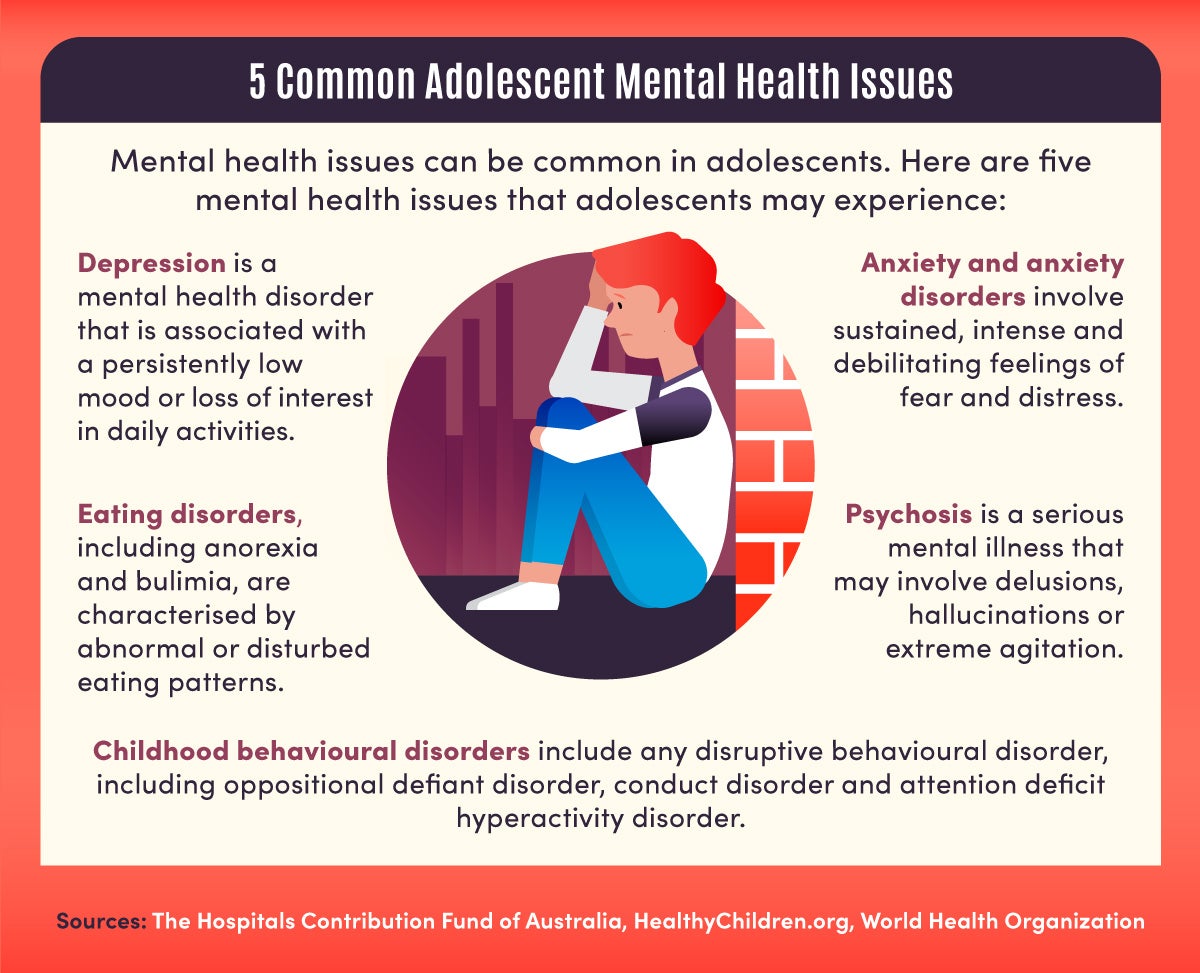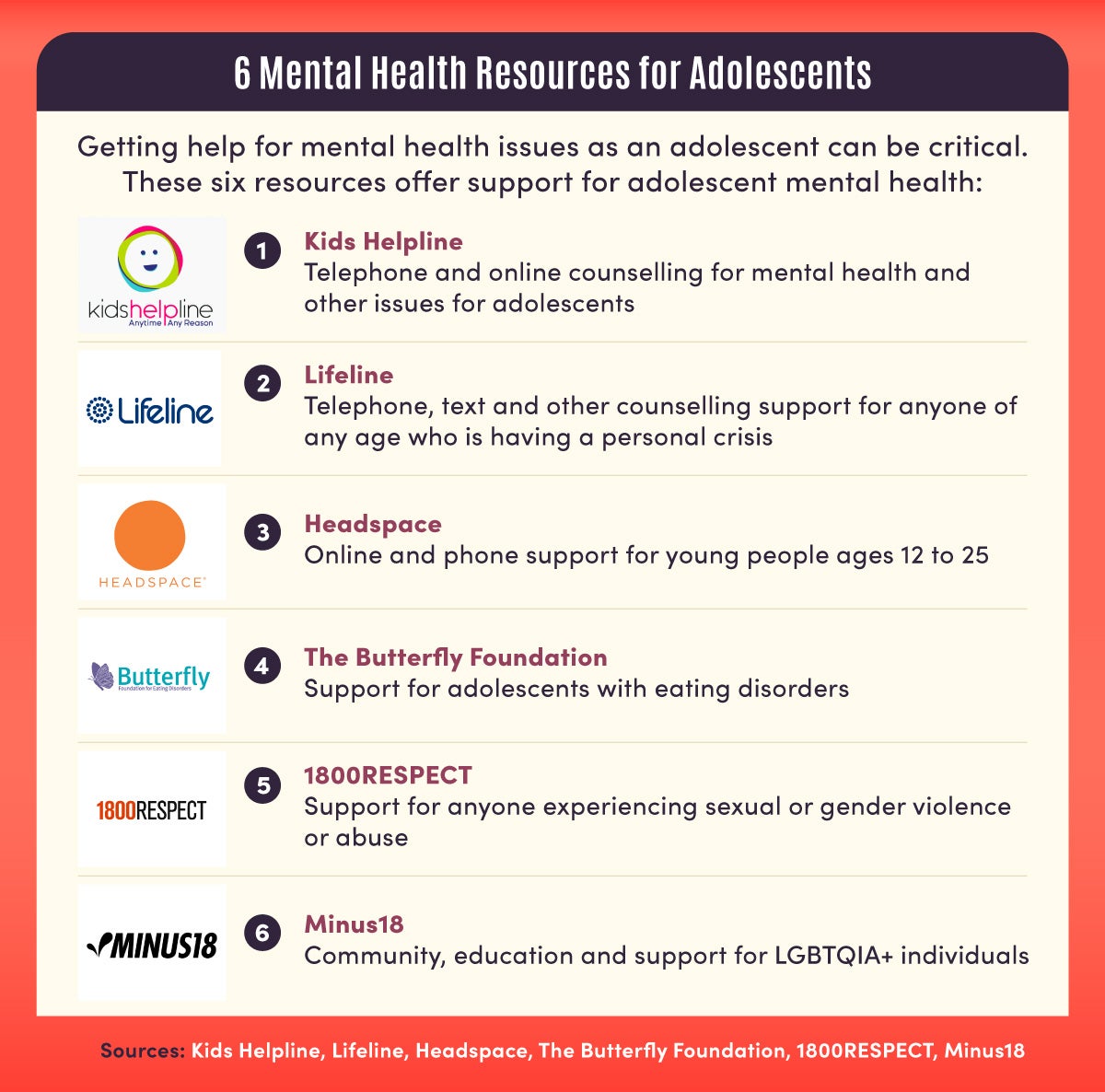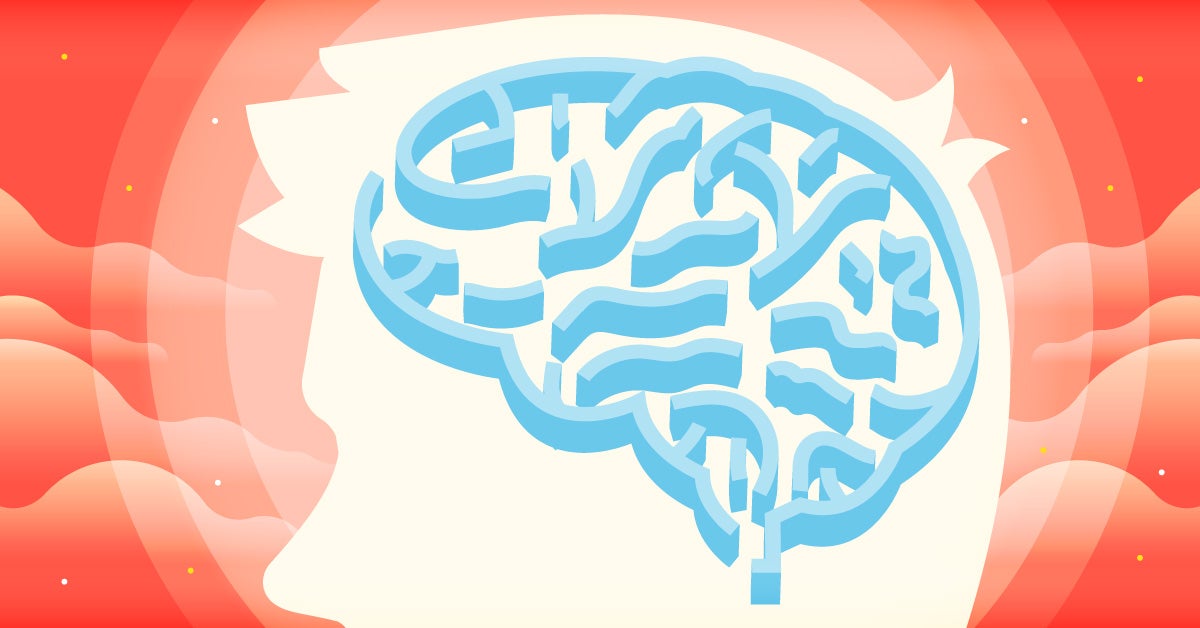
Adolescent Mental Health Guide for Teachers & Parents
Every single day of every single year, someone somewhere struggles with their mental health. Mental health challenges are common in adolescents in Australia, with almost a quarter of all adolescents facing some type of mental distress or challenge at any one time, according to Mission Australia. In recent years, the number of adolescents facing challenges has risen by 5.5%, with young women twice as likely as young men to experience mental health issues. Given how common adolescent mental health challenges are, teachers and parents must learn more about youth mental health.
This guide will provide an overview of adolescent mental health, why mental health issues are common in adolescents and what makes adolescents more likely to experience issues. It will also highlight five common mental health issues and what contributes to these issues, as well as what the signs of mental illness may be, and where adolescents can go to seek further support.
If you want to be able to make a difference in the lives of others, ECU's online Master of Counselling will give you skills that you can apply to a range of roles and industries. With a unit dedicated to Child and Adolescent Counselling, you can learn the skills, theories and techniques for working with young people in a counselling setting.
Adolescent mental health explained
Adolescent mental health refers to the social, emotional and mental health of an adolescent, typically defined as a young person aged 9 to 18. The adolescent phase in a young person’s life is important as their brains are maturing at a rapid pace, so for this reason, maintaining good mental health is critical.
Good adolescent mental health leads to happier, more positive young adults. Adolescents with good mental health generally feel positive about themselves and life, have good relationships, eat healthily and exercise regularly, sleep well and feel like they belong.
Yet adolescence is a particularly challenging time for mental health for several reasons. According to the World Health Organization (WHO), mental health issues in adolescents are generally due to the multiple stresses in their lives. These include a desire for autonomy, exploration of sexual identity, pressure to fit in with their peers and the increased use of technology, which can lead to pressure from social media to conform to a certain way of looking or behaving.
Beyond the desire to fit in, other factors can play a significant role in adolescent mental health. These include the degree to which adolescents themselves are supported at home and school, and whether they experience bullying, violence or socioeconomic problems.
Further resources to better understand adolescent mental health
For more information on what adolescent mental health is and why adolescents may experience mental health issues, please see:
● HealthDirect, Teenage Mental Health. Learn about common mental health issues for teenagers.
● Black Dog Institute, Youth Mental Health. Explore research studies on various aspects of youth mental health.
● Department of Health, The Mental Health of Children and Adolescents. Download the report that examines the results of the Australian Child and Adolescent Survey of Mental Health and Wellbeing.
Types of adolescent mental health issues
Adolescent mental health is complex — often adolescents do not experience just one mental health issue, nor do these issues have a single contributing factor. Teachers and parents need to understand the different types of issues that might appear and what may cause them.
5 common adolescent mental health issues
Here are five common mental health issues:
1. Depression
Being an adolescent can have its challenges, and experiencing ups and downs in daily life is normal for young people. When adolescents are feeling down, they may have trouble sleeping, concentrating on their school work or getting motivated in general.
Depression in adolescents, however, is more than just feeling sad. Although differentiating between sadness and depression can be difficult, signs that an adolescent might be depressed include feeling sad for longer than two weeks, persistent strong emotions and emotions that impact the enjoyment of life.
Depression can have serious long-term consequences, so all teachers and parents should look for symptoms and seek professional help if required.
2. Eating disorders
Eating disorders, including binge eating disorders and anorexia and bulimia nervosa, affect over 16% of the Australian population, according to the National Eating Disorders Collaboration. The peak risk period for eating disorders is in adolescence, so all parents and teachers need to understand what they are.
An eating disorder is a serious mental health condition that involves an unhealthy obsession with eating, exercise and body shape. Adolescents experiencing this condition typically display extreme dissatisfaction with their body, a fear of putting on weight and unhealthy eating habits.
Adolescents who experience an eating disorder may need any of a number of treatments, from counselling to hospitalisation.
3. Anxiety and anxiety disorders
Anxiety, felt as a tense or uncomfortable nervous feeling, is an extremely common adolescent mental health issue. Anxiety is a normal reaction to new or stressful situations, and as adolescents grow and desire more independence, they naturally come across situations that cause anxiety.
Adolescents may worry about any number of things, including starting school, fitting in or performing publicly; they may even have irrational concerns about the world around them. Most of the time, anxiety is temporary.
However, it doesn’t always go away. When adolescents experience anxiety that is extreme and continues for a long period, they may have an anxiety disorder. An anxiety disorder is a serious mental health problem, and teachers and parents should seek professional help if they believe an adolescent is experiencing this.
4. Childhood behavioural disorders
Children and adolescents can experience a number of childhood behaviour disorders. The most common disorders are attention deficit hyperactivity disorder (ADHD), oppositional defiant disorder (ODD) and conduct disorder (CD). All of these disorders can be disruptive to the adolescent’s quality of life, but are manageable with the right support.
ADHD, ODD and CD have many similar symptoms, so diagnosis can be difficult. Some common symptoms that adolescents may display if they have any of the above disorders include getting easily angered or annoyed, refusing to obey rules and exhibiting low self-esteem.
Behavioural disorders can only be diagnosed by professionals, so if parents are concerned, they should seek professional help straight away.
5. Psychosis
Psychosis is a concerning adolescent mental health issue. Defined as a disruption to an adolescent’s thought process, psychosis is where someone loses the ability to differentiate between what is real and what isn’t. However, psychosis is a symptom and not a diagnosis, and may indicate other, more serious mental health issues.
Adolescents who experience psychosis may suffer a mild impairment in their thought process or may be unable to participate in daily life. The symptoms of psychosis may be similar to depression, so it can be hard to diagnose. Adolescents experiencing it may exhibit mood swings, a cold and detached demeanor and difficulty with everyday activities and relationships.
Risk factors that contribute to adolescent mental health issues
Adolescence can be challenging for all young people, but multiple risk factors can affect whether, and how extreme, their mental health challenges might be. Here are eight risk factors that contribute to adolescent mental health issues.
1. Loneliness
Loneliness, or a persistent feeling that you are not supported or engaged with those around you, can negatively affect mental health. Research shows that adolescents are often the loneliest age group, because they feel misunderstood or do not have anyone to talk to.
2. Low self-esteem
Low self-esteem, or regularly being critical of yourself and ignoring your achievements, can lead to many adolescent mental health issues, including anxiety and depression. Low self-esteem can also lead to substance abuse and relationship issues.
3. Bullying
Bullying, or incessant and hurtful teasing, can harm adolescent mental health. ReachOut Australia notes that one-third of all Australian students experience bullying at some point, and many adolescents feel powerless against bullying and often develop mental health issues, such as depression and anxiety, as a result.
4. Pressure to conform
Peers play a big part in an adolescent’s life, and for that reason, the pressure to conform can be intense. A relationship can often be found between this pressure to conform and risk-taking behaviour in adolescents. Risk-taking behaviour can lead to mental health issues, including anxiety and depression.
5. Social media
With the average person spending over three hours on their phone per day, according to WhistleOut, social media has a ubiquitous influence on our lives — and it isn’t always positive, especially for adolescents. Social media use in adolescents has been shown to disrupt sleep, spread rumours, create unrealistic expectations and encourage peer pressure. One study cited by the Mayo Clinic showed that adolescents who spent more than three hours on social media a day were at a heightened risk of mental health issues.
6. Abusive relationships
Family support is critical during the adolescent years to guide young people through potentially challenging situations. For this reason, abusive relationships, including those with parents or siblings, may lead to significant mental health issues. Abuse of any kind can cause lasting problems.
7. Sexual identity
In the teenage years, young people continue forming their gender identity and want to start to express their sexual orientation. Many adolescents may not feel supported in expressing their sexual orientation, which can lead to feelings of self-doubt, low self-esteem, guilt, anxiety and even depression.
8. Sexual abuse
Sexual abuse is alarmingly common in adolescents. Although statistics vary, numbers often cited in the media indicate that 15% to 20% of girls and nearly 5% of boys have been victims of assault. The impact of abuse can be serious and long-lasting, with victims experiencing increased levels of depression and anxiety, as well as post-traumatic symptoms.
Further resources for adolescent mental health risk factors
To find out more about adolescent mental health issues and contributing factors, please see:
● Youth.gov, Risk & Protective Factors. Explore a host of individual, family and community risk factors for youth mental health issues.
● VicHealth, Mental Wellbeing Risk & Protective Factors. Review the findings of VicHealth’s mental health Evidence Check.
● Australian Institute of Health and Welfare, Mental Health of Australia’s Young People and Adolescents. Learn more about mental health disorders in young people through results from the Young Minds Matter survey.

Signs of Adolescent Mental Health Issues
Parents, teachers and young people themselves understand that adolescent mental health issues are serious. However, what can be more difficult is understanding what the signs of adolescent mental health issues are and how to differentiate them from normal ups and downs.
The signs of adolescent mental health issues vary according to how old the adolescent is. Here are signs to look for according to age.
6 signs of adolescent mental health issues for those under 12 years old
Here are six signs that may indicate mental health issues in young adolescents:
1. Constant sadness, ongoing fear or worry
All adolescents experience the natural ups and downs of life, especially given the immense brain maturation that happens during this period. However, constant sadness or ongoing fear or worry can be a sign of mental health issues. If an adolescent under the age of 12 appears to be persistently sad, fearful or worried for more than two weeks, this may be a sign of a mental health issue.
2. Change in school performance
Many factors can affect an adolescent’s school performance, including their teachers, their interest in the subject at hand and their enjoyment of academic learning in general. However, most students typically perform consistently over time. For this reason, a change in school performance can be a concern.
A subject-to-subject change in performance usually isn’t anything to worry about, but if an adolescent makes a large and unexplainable change in their level of interest in school and performance overall, they may have a mental health issue.
3. Problems fitting in at school
Friends play a big part in an adolescent’s life, as do peer pressure and the desire to conform. If an adolescent has problems making or keeping friends, this can lead to other issues.
Problems fitting in at school can be a sign an adolescent is withdrawn and not engaging, which could indicate a mental health issue.
4. Aggressive or consistently disobedient behaviour
Throughout the preteen and teen years, adolescents’ brains are developing and learning how to process emotions. They are also learning how to cope with life and how to responsibly and reasonably react to challenging situations in their lives.
If an adolescent is regularly reacting to situations with aggression, or alternatively, if they are often disobedient, it may be a sign they are not coping, which may indicate a mental health issue.
5. Sleep problems
Sleep is essential for healthy and active adolescents. In fact, research shows that adolescents need more sleep than adults, with the average adolescent needing between eight and 10 hours of sleep a night, according to the Better Health Channel.
If an adolescent is having trouble going to sleep or staying asleep, this can adversely affect their health and wellbeing, and may also be a sign of mental health distress.
6. Change in appetite
Anxiety, depression and other mental health issues can affect the eating habits of anyone, regardless of age. In younger adolescents, however, these issues (anxiety, in particular) can cause stomach aches, resulting in a decreased appetite. To make matters worse, the lack of nutrients and possible low body weight can exacerbate mental health issues — it’s a vicious circle.
If an adolescent experiences a sudden, ongoing change in their appetite, it could be a sign of a deeper issue.
5 signs of adolescent mental health issues for those over 12 years old
Here are five signs that may indicate mental health issues in older adolescents:
1. Feeling hopeless, fearful or unmotivated
The adolescent years are when most young people discover their hobbies, passions and interests, so showing preferences and more motivation for certain activities is natural for adolescents. If they are not motivated at all, however, or continually feel hopeless about everything, this is a concerning sign.
Adolescents who exhibit a sustained sense of hopelessness or lack of motivation (defined as feeling this way for more than two weeks) may have mental health issues.
2. Avoiding friends or social contact
Everyone, including adolescents, has a natural tendency toward a certain level of introversion or extroversion, with some people preferring a lot of human contact and others preferring very little. However, adolescents particularly lean on their friends for social support, so an adolescent who avoids all of their friends and also eschews social contact in general might be experiencing mental health issues.
3. Expressing feelings of physical pain
Some mental health issues, including anxiety and depression, can manifest themselves as physical pain. For example, anxiety is commonly associated with physical symptoms such as nausea, headaches and shortness of breath, as well as muscle tension and pain.
If an adolescent is experiencing physical symptoms, they should be checked by a health professional and screened for mental health issues.
4. Being anxious about weight and appearance
Due to the influence of social media and gendered expectations regarding appearance, adolescents are often concerned with how they look. However, an obsession with weight and appearance is a cause for concern.
When an adolescent has an unhealthy relationship with their body and a negative view of how they look it can be a sign of a mental health issue, including anorexia nervosa or bulimia.
5. Sudden changes in behaviour
It’s common knowledge that many adolescents are moody. Hormonal shifts that occur during puberty affect the way adolescents think and feel, and can often cause them to be irritable, sad or frustrated.
However, as with many mental health symptoms, this irritability or frustration should not be sustained and lasting. If it is, it could be a sign of mental health issues.
Further resources on signs of mental health issues
For more information on signs of mental health issues in adolescents, please see:
● Kidspot, Mental Health Issues in Children: How to Spot Warning Signs. View a list of common warning signs of mental health concerns in children.
● Beyond Blue, Mental Health Conditions in Young People. Learn more about eating disorders, self-harm and other youth mental health issues.
● Sane Australia, Mental Health Issues in Younger People. Explore signs to look for that may indicate mental health issues in adolescents.
How to talk about mental health
Talking about mental health concerns to an adolescent, who may otherwise be moody and wanting space and independence, can be a challenge. Given the sensitive nature of the topic of mental health, adolescents may not want to share their feelings with you or may not know what to say. Regardless of this, if you believe an adolescent might have a problem, you need to say something.
Here are some tips for what to say and how to deal with the conversation:
Express concern
Calmly and factually, let them know that you’ve noticed they might be struggling and that you’ve seen warning signs. Show your concern, and tell them you’re willing to support them and are available if they want to share more information with you, whenever they are ready.
Regardless of whether they talk to you or not, your interest shows that you are willing to talk about their mental health and take it seriously.
Listen actively
If an adolescent does open up to you, ensure you are an active listener. Give eye contact and sit in a relaxed position. Ask open-ended questions and acknowledge their feelings. Try your best not to downplay their problems, regardless of how you may feel about them.
After you’ve listened, ensure you respond calmly. If the adolescent you are talking to sees that you judge them or are critical or angry, they will be less likely to come to you in the future. Reassure the adolescent that you are there for them and they aren’t alone. Finally, be respectful of their privacy and don’t pass the information they’ve shared on to others without permission.
Provide reassurance
If the adolescent you are talking to is experiencing mental health issues, they will most likely be feeling negative about multiple things. They may believe that nothing will change or that things are hopeless and won’t get better. Feeling this way can get in the way of finding solutions.
To help provide reassurance, let them know that options are available for what they can do next. Suggest that they focus on small steps, and do their best to sleep well, eat healthily and exercise.
Be open
Some mental health issues can be, in part, genetic. For example, according to Stanford Medicine, a person who has a relative with depression is almost five times more likely to develop it compared to someone who doesn’t. For this reason, if you, as a parent or teacher, experience a mental health issue, knowing how to talk about it is important.
Ensure you are open and honest about your illness. Talking about mental health can destigmatise it and help others to deal with it.
Help them seek support
You may believe that the adolescent you are talking to requires professional help. However, you shouldn’t force this on them. Let them know that support is available and that you can work through options together, including making an appointment with a doctor if needed.
Provide ongoing support yourself to the adolescent, regardless of whether they choose to seek help or they are not yet ready.
Further resources on how to talk to adolescents about mental health
For more information on how to talk to adolescents about mental health, please see:
● The Hospitals Contribution Fund of Australia, Talking to Teens About Mental Health: Here Are the Questions to Ask. Explore ways to talk to young people about their mental health.
● Better Health, Children, Young People and Mental Health Services. Discover tips and resources for providing a safe environment for adolescents to share their feelings.
● Headspace, How to Talk to Your Children About Mental Health. How do you start a conversation about mental health with a young person? Learn that and more.

Where adolescents can get mental health help in Australia
A key part of supporting adolescent mental health is understanding where to send adolescents to get further support. If someone you know needs support, you can find help from the following services:
● Kids Helpline. Kids Helpline provides telephone, email and online chat help to adolescents experiencing a variety of issues, including mental health issues, but also issues related to bullying, divorce and respect.
● Lifeline. Lifeline is a national crisis hotline dedicated to mental health, particularly suicide prevention.
● Headspace. Headspace provides resources, information and chat services for Australians of all ages who may be experiencing mental health issues.
● The Butterfly Foundation. The Butterfly Foundation provides targeted support and resources for anyone experiencing eating-related mental health issues.
● 1800RESPECT. 1800RESPECT is a national hotline that provides information, support and resources for anyone experiencing mental health issues related to abusive relationships.
● Minus18. Minus18 offers resources, education and advocacy, as well as community events, in support of LGBTQIA+ youth.
Further resources for mental health support
For more information on where adolescents can get mental health support in Australia, please see:
● Beyond Blue, Helpful Contacts and Websites. View a list of hotlines and websites that support adolescent mental health.
● Sane Australia, Young People. Find resources for young people and their parents in dealing with mental health issues.
● Head to Health, Support for Young People (Ages 12-18). Explore websites, forums and apps designed to support young people seeking mental health help.
Adolescent mental health matters
Adolescent mental health matters. In the future, hopefully, fewer adolescents will experience mental health issues as society becomes more understanding and supportive and the stigma of mental health issues is reduced.
In the interim, though, it is up to all of us — including all parents and teachers — to understand mental health in more detail, know the signs of issues and provide support to the adolescents in our lives.




